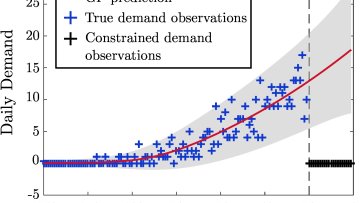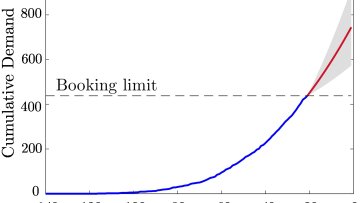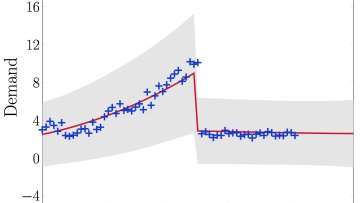The Oxford Summer School on Economic Networks, hosted by Oxford Mathematics and the Institute of New Economic Thinking, aims to bring together graduate students from a range of disciplines (maths, statistics, economics, policy, geography, development, ..) to learn about the techniques, applications and impact of network theory in economics and development.
Complex Systems Modeling and Analysis of Paintings and Music
Abstract
With the advent of large-scale data and the concurrent development of robust scientific tools to analyze them, important discoveries are being made in a wider range of scientific disciplines than ever before. A field of research that has gained substantial attention recently is the analytical, large-scale study of human behavior, where many analytical and statistical techniques are applied to various behavioral data from online social media, markets, and mobile communication, enabling meaningful strides in understanding the complex patterns of humans and their social actions.
The importance of such research originates from the social nature of humans, an essential human nature that clearly needs to be understood to ultimately understand ourselves. Another essential human nature is that they are creative beings, continually expressing inspirations or emotions in various physical forms such as a picture, sound, or writing. As we are successfully probing the social behaviors humans through science and novel data, it is natural and potentially enlightening to pursue an understanding of the creative nature of humans in an analogous way. Further, what makes such research even more potentially beneficial is that human creativity has always been in an interplay of mutual influence with the scientific and technological advances, being supplied with new tools and media for creation, and in return providing valuable scientific insights.
In this talk I will present two recent ongoing works on the mathematical analysis of color contrast in painting and measuring novelty in piano music.
Oxford Mathematicians Ilan Price and Jaroslav Fowkes discuss their work on unconstraining demand with Gaussian Processes.
"One of the key revenue management challenges which airlines, hotels, cruise ships (and other industries) all share is the need to make business decisions in the face of constrained (or censored) demand data.
Roger Penrose - Eschermatics SOLD OUT
Abstract
Oxford Mathematics and the Clay Mathematics Institute Public Lectures
Roger Penrose - Eschermatics
24 September 2018 - 5.30pm
Roger Penrose’s work has ranged across many aspects of mathematics and its applications from his influential work on gravitational collapse to his work on quantum gravity. However, Roger has long had an interest in and influence on the visual arts and their connections to mathematics, most notably in his collaboration with Dutch graphic artist M.C. Escher. In this lecture he will use Escher’s work to illustrate and explain important mathematical ideas.
Oxford Mathematics is hosting this special event in its Public Lecture series during the conference to celebrate the 20th Anniversary of the foundation of the Clay Mathematics Institute. After the lecture Roger will be presented with the Clay Award for the Dissemination of Mathematical Knowledge.
5.30-6.30pm, Mathematical Institute, Oxford
Please email @email to register.
Watch live:
https://www.facebook.com/OxfordMathematics
https://livestream.com/oxuni/Penrose
The Oxford Mathematics Public Lectures are generously supported by XTX Markets.
Alfio Quarteroni - Mathematical and numerical models for heart function
Abstract
Mathematical models based on first principles can describe the interaction between electrical, mechanical and fluid-dynamical processes occurring in the heart. This is a classical multi-physics problem. Appropriate numerical strategies need to be devised to allow for an effective description of the fluid in large and medium size arteries, the analysis of physiological and pathological conditions, and the simulation, control and shape optimisation of assisted devices or surgical prostheses. This presentation will address some of these issues and a few representative applications of clinical interest.
Sir John Ball - Minimization, constraints and defects
Abstract
It is at first sight surprising that a minimizer of an integral of the calculus of variations may make the integrand infinite somewhere.
This talk will discuss some examples of this phenomenon, how it can be related to material defects, and related open questions from nonlinear elasticity and the theory of liquid crystals.
On the Birational Classification of Algebraic Varieties
Abstract
Details to follow





